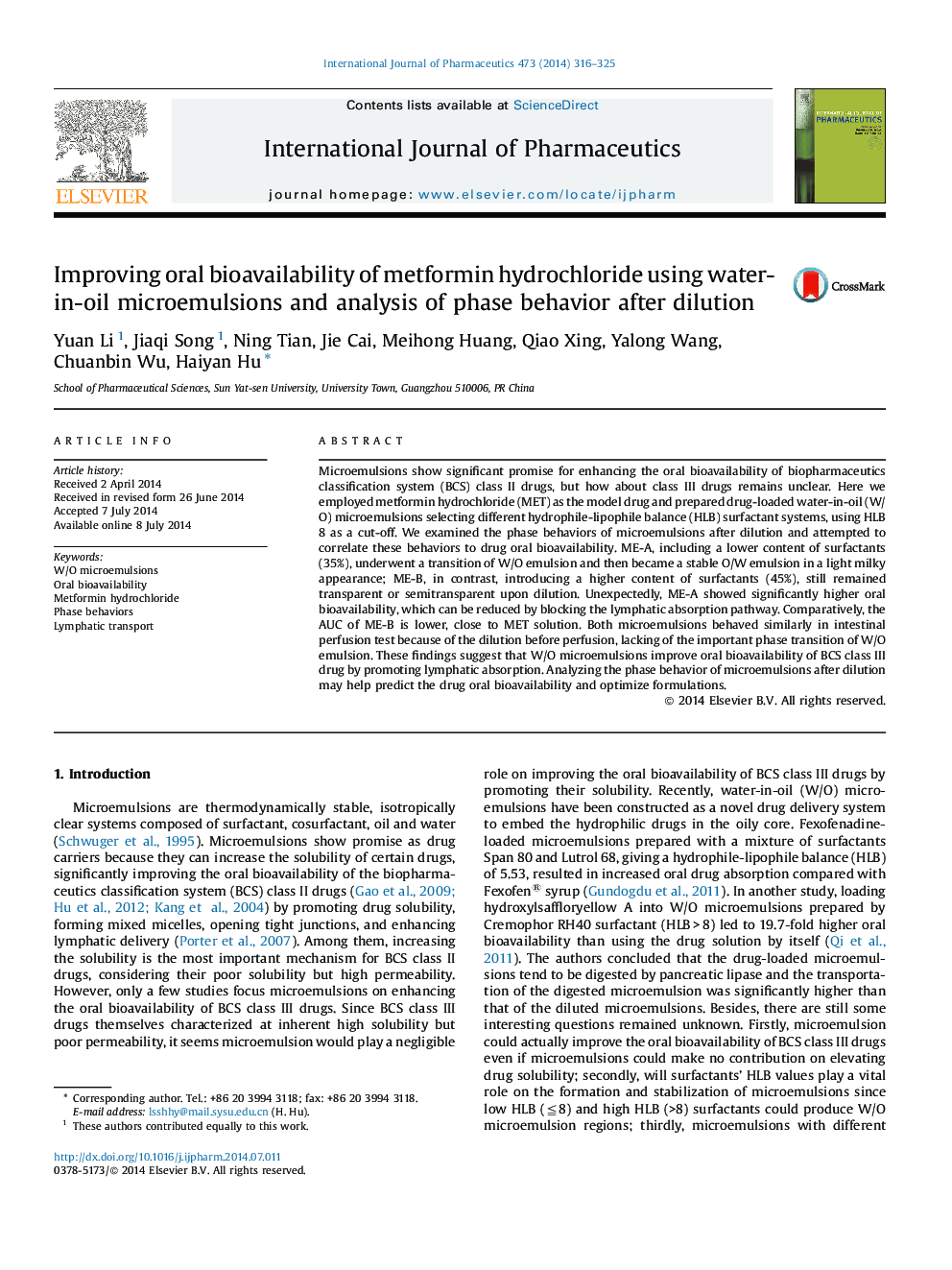| Article ID | Journal | Published Year | Pages | File Type |
|---|---|---|---|---|
| 5819477 | International Journal of Pharmaceutics | 2014 | 10 Pages |
Microemulsions show significant promise for enhancing the oral bioavailability of biopharmaceutics classification system (BCS) class II drugs, but how about class III drugs remains unclear. Here we employed metformin hydrochloride (MET) as the model drug and prepared drug-loaded water-in-oil (W/O) microemulsions selecting different hydrophile-lipophile balance (HLB) surfactant systems, using HLB 8 as a cut-off. We examined the phase behaviors of microemulsions after dilution and attempted to correlate these behaviors to drug oral bioavailability. ME-A, including a lower content of surfactants (35%), underwent a transition of W/O emulsion and then became a stable O/W emulsion in a light milky appearance; ME-B, in contrast, introducing a higher content of surfactants (45%), still remained transparent or semitransparent upon dilution. Unexpectedly, ME-A showed significantly higher oral bioavailability, which can be reduced by blocking the lymphatic absorption pathway. Comparatively, the AUC of ME-B is lower, close to MET solution. Both microemulsions behaved similarly in intestinal perfusion test because of the dilution before perfusion, lacking of the important phase transition of W/O emulsion. These findings suggest that W/O microemulsions improve oral bioavailability of BCS class III drug by promoting lymphatic absorption. Analyzing the phase behavior of microemulsions after dilution may help predict the drug oral bioavailability and optimize formulations.
Graphical abstractDownload high-res image (90KB)Download full-size image
